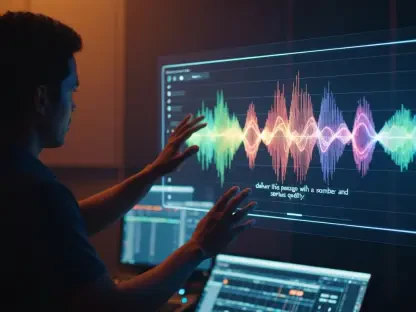In the fast-evolving landscape of artificial intelligence, a tantalizing rumor has emerged from Silicon Valley, capturing the imagination of tech enthusiasts and industry insiders alike with its potential to reshape personal technology. Speculation about a possible collaboration between Elon Musk’s xAI and tech giant Apple has sparked intense debate, with the focal point being the integration of xAI’s cutting-edge chatbot, Grok, into Apple’s ecosystem to revolutionize Siri. This partnership, if realized, could mark a significant shift in consumer technology, blending Apple’s hardware prowess with xAI’s innovative AI capabilities. As Apple grapples with delays in its generative AI projects, such as the beta-stage Apple Intelligence, the idea of leveraging Grok’s advanced features presents an intriguing solution. Meanwhile, xAI stands to gain access to a massive user base, amplifying its reach. This article delves into the possibilities, challenges, and implications of such an alliance, exploring whether this rumored merger could redefine personal computing.
Exploring the Potential of a Groundbreaking Alliance
The notion of xAI and Apple joining forces has ignited discussions about how such a collaboration could address critical gaps in Apple’s AI strategy. Apple has faced mounting criticism for lagging behind in the race for consumer-facing AI innovations, with competitors like Google and OpenAI setting the pace. Grok, known for its rapid advancements in areas like image understanding and video generation, offers a potential lifeline. Its ability to create specialized agents for tasks such as coding and media production could significantly enhance Siri, transforming it from a basic voice assistant into a more dynamic, versatile tool. Reports suggest that exploratory discussions are underway, fueled by mutual interests—Apple’s need for cutting-edge AI and xAI’s ambition to expand its footprint. If successful, this partnership could position both companies as formidable players in the AI-driven future, potentially reshaping how users interact with their devices on a daily basis.
Beyond the technical synergies, the financial and strategic stakes of this rumored alliance are substantial. xAI’s subscription revenue has already reached an annualized figure of nearly $17 million, indicating a robust business model that could complement Apple’s ecosystem. For Apple, integrating Grok’s capabilities could boost its market capitalization by enhancing the appeal of its products, particularly the iPhone and iPad, through superior AI functionalities. A recently launched iPhone app offering free access to advanced Grok models hints at a possible stepping stone toward deeper integration into iOS. However, aligning two companies with distinct operational philosophies poses challenges. While the potential for innovation is immense, industry analysts remain cautiously optimistic, noting that the partnership’s success hinges on navigating complex negotiations and aligning long-term goals. The coming months will be pivotal in determining whether this collaboration can move from speculation to reality.
Challenges and Skepticism Surrounding the Collaboration
Despite the excitement, significant hurdles stand in the way of a seamless partnership between xAI and Apple. One of the primary concerns is the cultural mismatch between the two entities. Apple’s well-known emphasis on user privacy and a tightly controlled ecosystem contrasts sharply with Grok’s unfiltered, creative approach to AI outputs, which has occasionally stirred controversy over perceived biases. Integrating such a bold AI into Apple’s polished, user-centric framework could risk alienating loyal customers if not handled with care. Additionally, regulatory scrutiny over data-sharing agreements and antitrust issues looms large, as both companies operate under intense public and governmental oversight. These challenges highlight the delicate balance needed to merge innovation with ethical responsibility, casting doubt on whether the collaboration can overcome these foundational differences without compromising core values.
Skepticism among industry observers further tempers the enthusiasm surrounding this potential merger. Many point to Apple’s historically closed ecosystem and Elon Musk’s reluctance to engage in mergers in other ventures as reasons to doubt the likelihood of a full-fledged partnership. Past controversies surrounding Grok’s responses, coupled with Apple’s methodical approach to product development, could create friction in aligning their visions. Moreover, public perception plays a critical role—any misstep in handling AI ethics or data privacy could lead to significant backlash. While some in the tech community see immense potential for breakthroughs in personalized computing, others warn of practical and ethical conflicts that might derail progress. As updates like the anticipated release of Grok 4 approach, the industry watches closely to see if these obstacles can be navigated or if they will ultimately prove insurmountable.
Looking Ahead to AI’s Evolving Role in Technology
Reflecting on the broader implications, a successful alliance between xAI and Apple could set a powerful precedent for future tech collaborations. If the integration of Grok enhances Siri’s capabilities, it might accelerate AI adoption across consumer devices, influencing how other companies approach partnerships. The speculated merger highlights the tension between rapid technological advancement and the need for user-centric, ethical design—a balance that remains elusive. Industry dynamics could shift, with competitors compelled to innovate at a faster pace to keep up with such a formidable duo. This rumored collaboration underscores the potential for hardware and software expertise to converge, creating transformative user experiences that redefine daily interactions with technology.
Ultimately, the discussions surrounding this partnership remind stakeholders of the importance of strategic alignment in tech innovations. While the alliance remains speculative, it prompts critical conversations about overcoming cultural and regulatory barriers. Moving forward, companies are encouraged to prioritize transparent communication and robust ethical frameworks when exploring similar ventures. The tech community is left to consider how future collaborations can build on these lessons, ensuring that advancements in AI serve both innovation and responsibility. As the narrative of this potential merger fades into tech history, it paves the way for renewed focus on creating synergies that respect both corporate identities and user trust, shaping the path for AI’s role in the years ahead.









